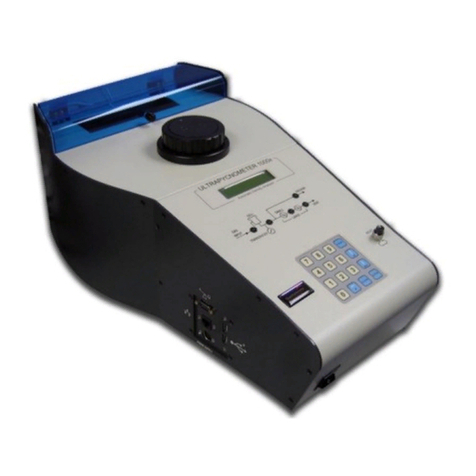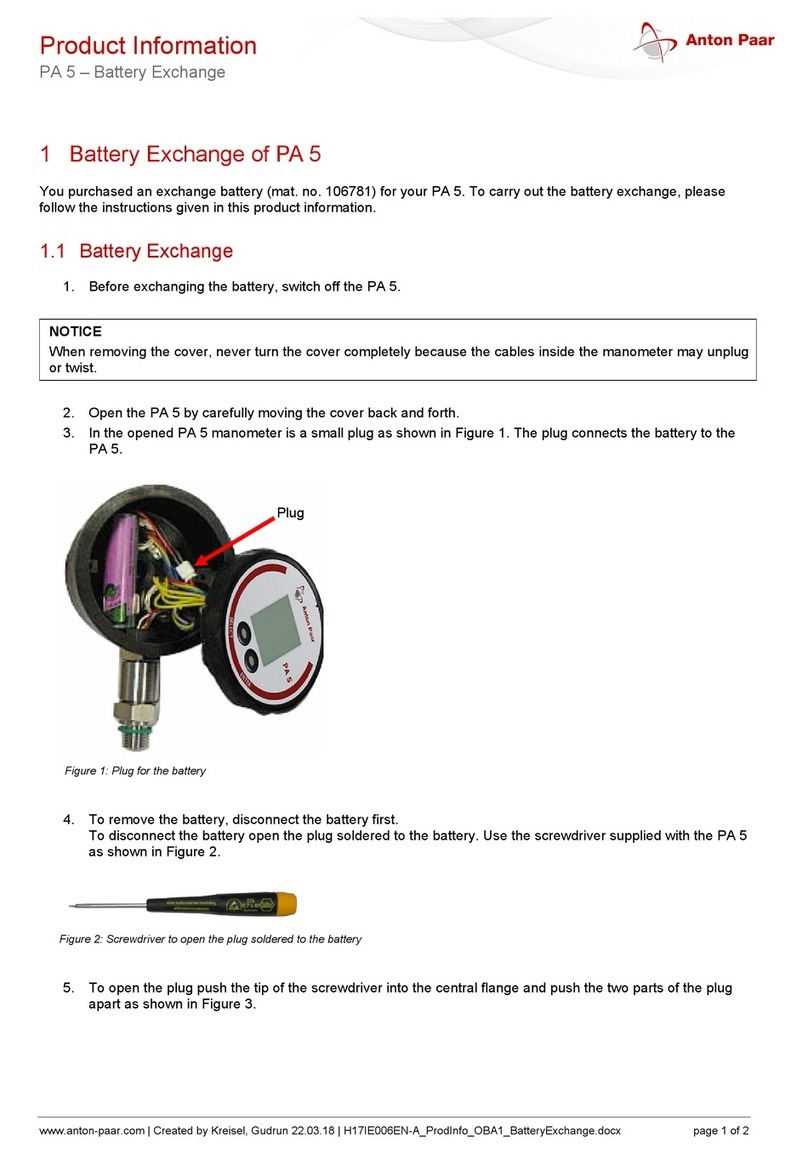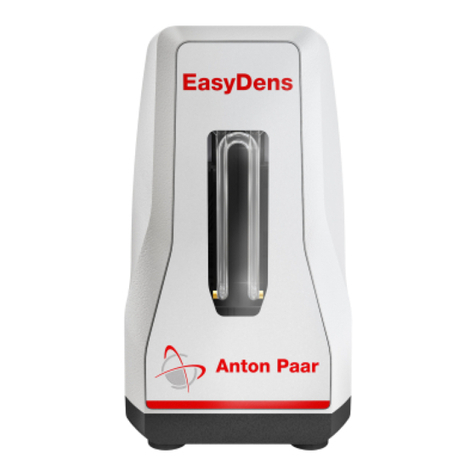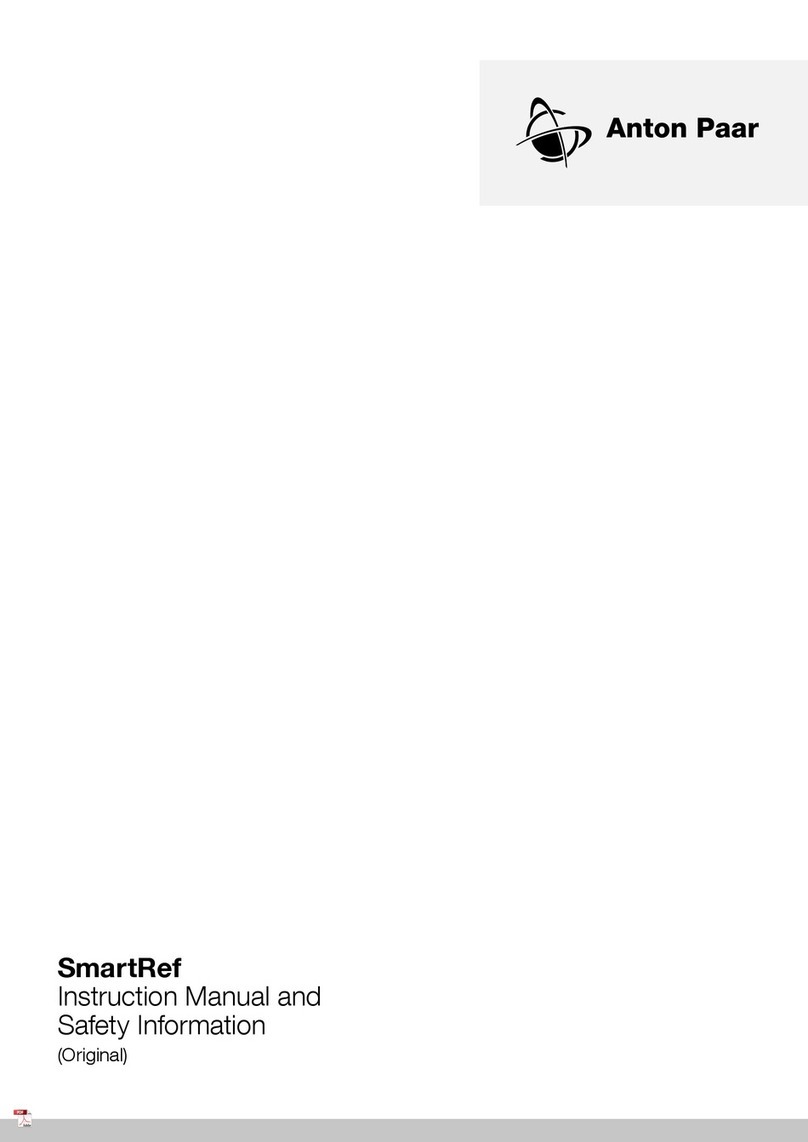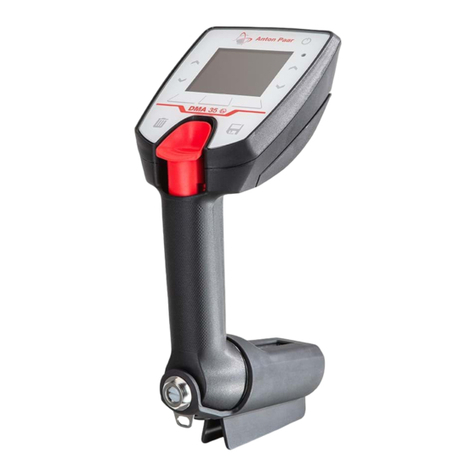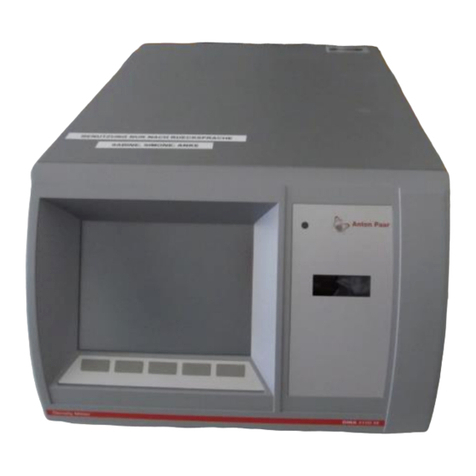
2 SVM X001 - An Overview
8D89IB001EN-O
2 SVM X001 - An Overview
All models of the SVM X001 family conform to
ASTM Standards D7042, EN 16896, DIN 51659-2,
and other national and international standards.
SVM 3001/4001 additionally conform to ASTM
Standard D4052 on density measurement: They
provide a higher resolution of density measurement
and monitor the filling quality of the density cell in
real time with the FillingCheck™ function.
Find all standards referencing an SVM X001 model
listed on the Anton Paar home page.
Any SVM model can be combined with an automatic
sample changer.
2.1 Intended Use of the Instrument
SVM is intended for measuring dynamic viscosity
and density of liquid, mainly oily samples and simul-
taneously calculating their kinematic viscosity and
other related measuring quantities.
SVM 2001
SVM 2001 is designed for measuring at constant
temperature. It covers a measuring temperature
range from 15 °C (59 °F) to 100 °C (212 °F). You
can measure most of the samples listed for
SVM 3001 within this range.
• Additional software function – upgradeable
With option "License Key SVM 2001 Viscosity In-
dex" (Mat. No. 199941), you can activate determi-
nation of viscosity index and related parameters.
You get a license key (= unlock code). The first
8 characters of the code are the serial number of the
SVM 2001. If the SVM 2001 was ordered along with
this option, you get a certificate with the unlock
code. Activate the option during initial installation.
Enter the unlock code here:
- Menu > Service > Unlock Feature
For further information, see the Reference Guide,
section 5.3.2.8 and table 34.
Due to the different construction, heating rates of
SVM 2001 are slower than those of SVM 3001.
SVM 3001
SVM 3001 can perform temperature scans and also
Viscosity Index determination. It covers a measur-
ing temperature range from -60 °C (-76 °F) to
+135 °C (+275 °F). Find details on operation at low
temperatures in the Reference Guide.
The below list names sample types which can be
measured within the range of SVM 3001:
• standard and base oils
• fresh and used lubrication oils, e.g. engine
crankcase oil, gear oil, ATF...
• other oils, e.g. mineral oil, white oil,
conservating oil, heat transfer oil...
• hydraulic liquids, e.g. hydraulic oils, brake fluids
• edible oils, vegetable oils
• fuels (e.g. diesel fuel, biodiesel, jet fuel, marine/
bunker fuels,...)
• pure hydrocarbon solvents and mixtures (e.g.
naphtha, toluene, hexane...)
• heavy heating oils, crude oils (treated), waxes,
vacuum distillates with high melting point or high
viscosity at elevated temperatures. For measur-
ing these substances you need the Hot Filling
Attachment. For details on the attachment and
exact specifications of measurable substances,
see Reference Guide.
• others: glycol (e.g. antifreeze), glycerine,...
• with Option PEEK Rotor Bearings: some
samples with poor lubricity, such as silicone oils,
mixtures of water and glycol or glycerine, or sea
water. See also the Product Description List. For
mounting the optional bearings, see section 7.3.
SVM 4001
SVM 4001 contains two viscosity and two density
measuring cells in one housing. Each pair of cells
can be operated at a different measuring tempera-
ture within a range from 15 °C (59 °F) to 100 °C
(212 °F).
The cells are internally connected. You fill from the
sample inlet (lower opening). The upper opening is
the sample outlet. This design allows to access both
viscosity cells for manual cleaning. Both visco cells
are closed with a measuring cell lock.
The sample liquid fills the cells in the following order:
- viscosity cell 1 Cell 1 (SVM 1)
- density cell 1
- density cell 2 Cell 2 (SVM 2)
- viscosity cell 2


